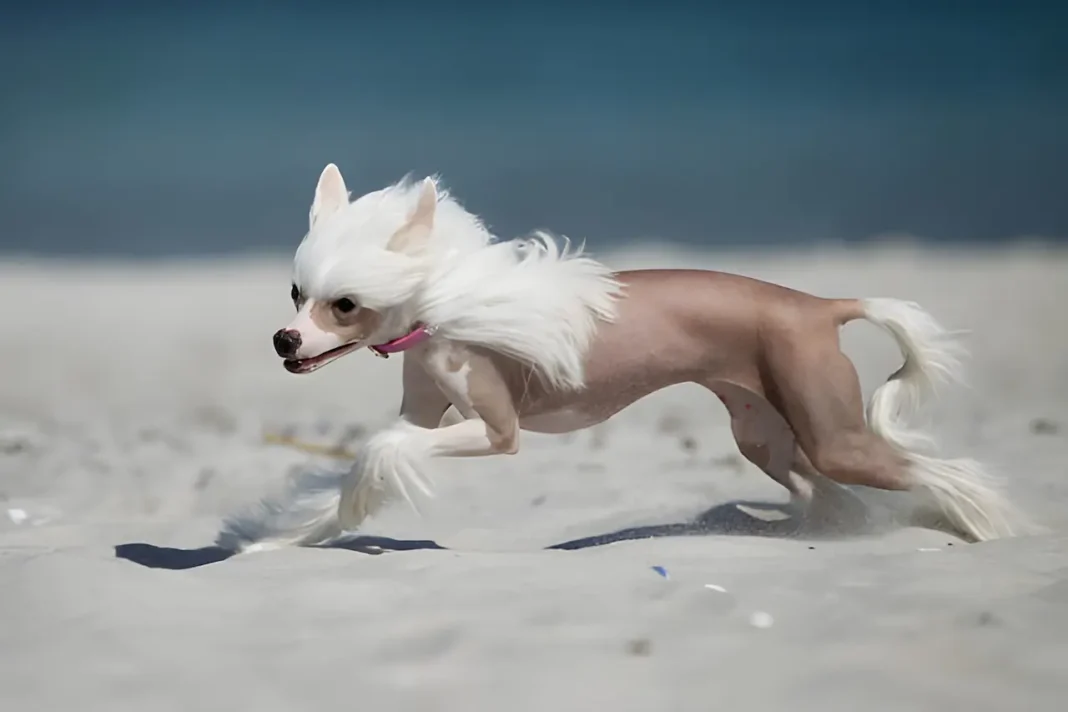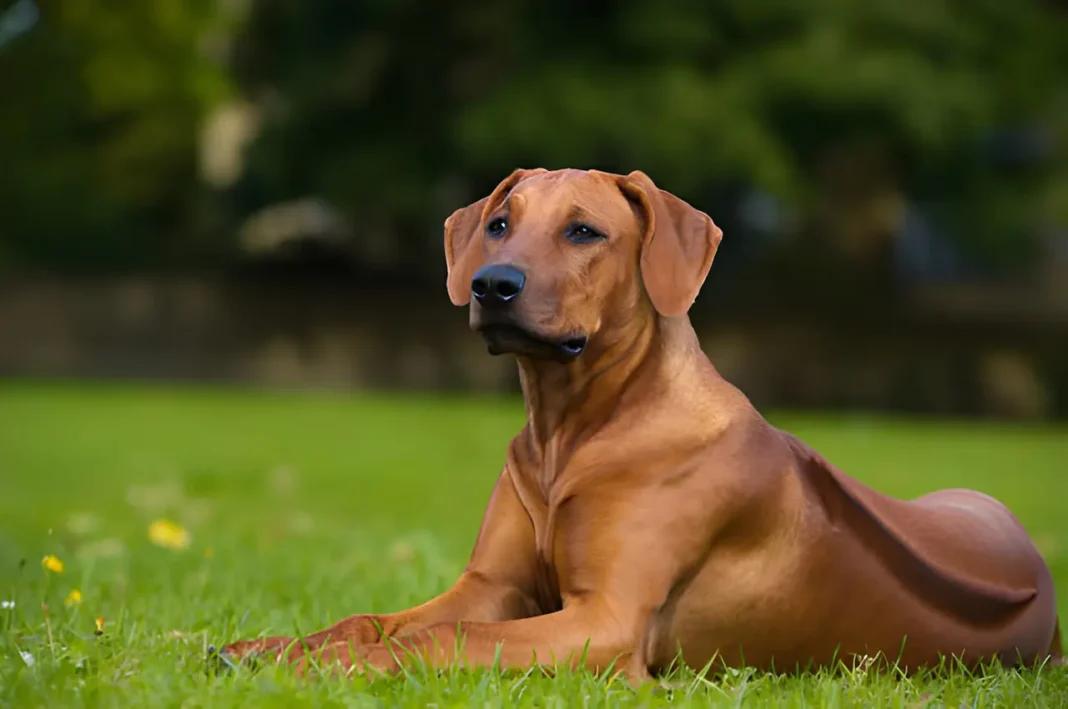Discover the best dog breeds for hot weather with our expert veterinary guide. Learn which 15 heat-tolerant breeds thrive in warm climates, plus essential care tips to keep your dog safe.
Finding the Best Dog Breeds for Hot Weather
Choosing the right dog breed for hot weather is one of the most important decisions prospective pet owners in warm climates can make. While some dog breeds for cold weather like Siberian Huskies and Alaskan Malamutes thrive in snow, others need protective clothing just to walk around the block in cool temperatures.
If you live in a hot climate—whether it’s Florida, Texas, California, Arizona, or other warm regions—adopting a heat-tolerant dog breed isn’t just about convenience; it’s essential for your pet’s health and wellbeing. This becomes especially critical for active families seeking an adventure companion for running, hiking, beach activities, or outdoor sports in warm weather.
Understanding Heat Tolerance in Dogs: The Science Behind Hot Weather Breeds
Modern veterinary research has identified specific characteristics that enable certain dog breeds to regulate body temperature effectively in hot weather conditions. Understanding these traits is essential for selecting the best dogs for warm climates.
What Makes Dogs Good for Hot Weather?
Coat Type and Color Matter
The best dog breeds for hot weather typically have short, single-layer coats that allow heat to dissipate efficiently. Dogs with thick double coats trap heat close to the body, making them unsuitable for warm climates. Light-colored coats (white, tan, cream, fawn) reflect sunlight, while darker coats absorb heat. This is why many heat-tolerant dog breeds have lighter coat colors naturally.
Body Structure and Build
Dogs that do well in hot weather often have:
- Lean, athletic builds with lower body fat
- Long legs providing greater surface area for heat dissipation
- Slender frames that don’t trap excess heat
- Large, erect ears that function as natural radiators
Muzzle Length and Breathing Efficiency
Long-nosed dogs can cool inhaled air more effectively through their nasal passages before it reaches the lungs. This makes them superior at thermoregulation compared to brachycephalic (flat-faced) breeds, which struggle with efficient panting in hot weather.
Geographic Origins
Dog breeds developed in hot climates—Africa, Mexico, Mediterranean regions, Middle East, and tropical areas—possess genetic adaptations for heat tolerance that have been preserved through generations of selective breeding.
Critical Heat Safety Warning for All Dog Owners
Important: Even the most heat-tolerant dog breeds can suffer from heat stroke in extreme conditions. Veterinary professionals emphasize that all dogs require:
- Constant access to fresh, cool water
- Adequate shade and preferably air-conditioned indoor spaces
- Exercise limited to cool morning or evening hours
- Never leave dogs in hot cars—even for “just a minute”
- Special sun protection for hairless breeds using vet-approved dog sunscreen
- Monitoring for heat stroke signs: excessive panting, drooling, lethargy, collapse
Top 15 Best Dog Breeds for Hot Weather
After extensive research with veterinarians and breed specialists, we’ve identified these 15 exceptional heat-tolerant breeds. Each offers unique characteristics suited to warm climate living.
Rhodesian Ridgeback – The African Lion Hunter
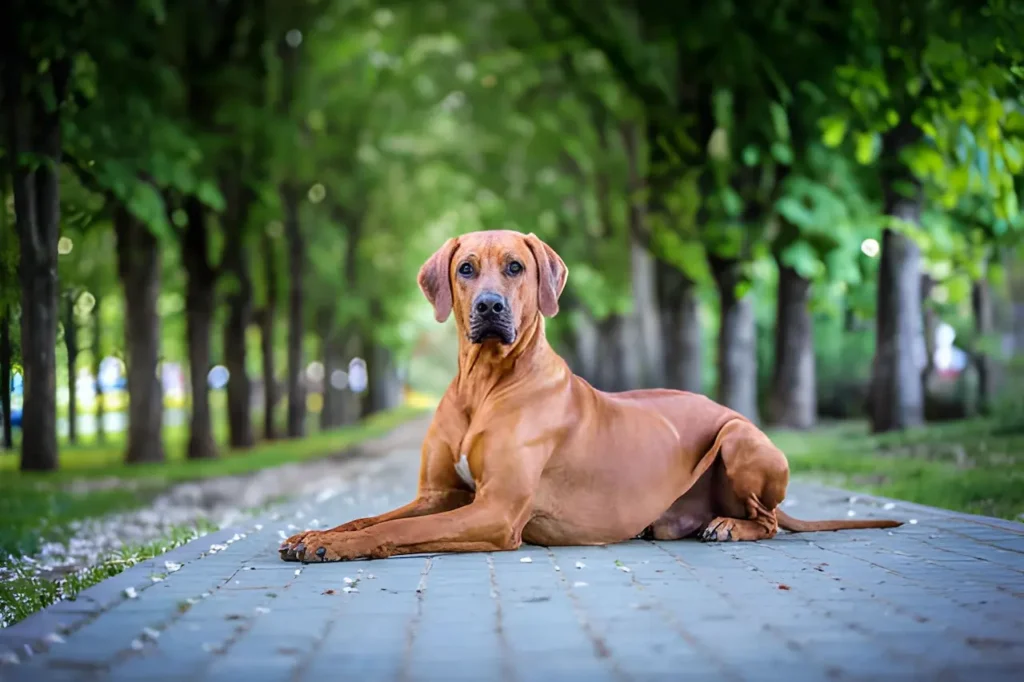
Breed Overview
The Rhodesian Ridgeback stands as one of the best dog breeds for hot weather, developed in southern Africa specifically to hunt lions and large game in extreme heat. Named for the distinctive ridge of reversed-growth hair along their spine, these muscular, athletic dogs possess exceptional heat tolerance. Their short, sleek coat and powerful build enabled them to pursue prey across the scorching savanna while maintaining stamina.
Modern Rhodesian Ridgebacks retain these thermoregulatory advantages. Owners consistently report that these dogs actively seek warmth—basking in direct sunlight, positioning themselves near heat sources, or burrowing under blankets. This heat-seeking behavior reflects their evolutionary adaptation to hot climates, making them ideal companions for warm regions.
Best For: Active families in hot climates, experienced dog owners, those with large yards
Exercise Needs: High – requires daily vigorous exercise
Grooming: Low maintenance – weekly brushing
Basenji – The Barkless Dog from Africa
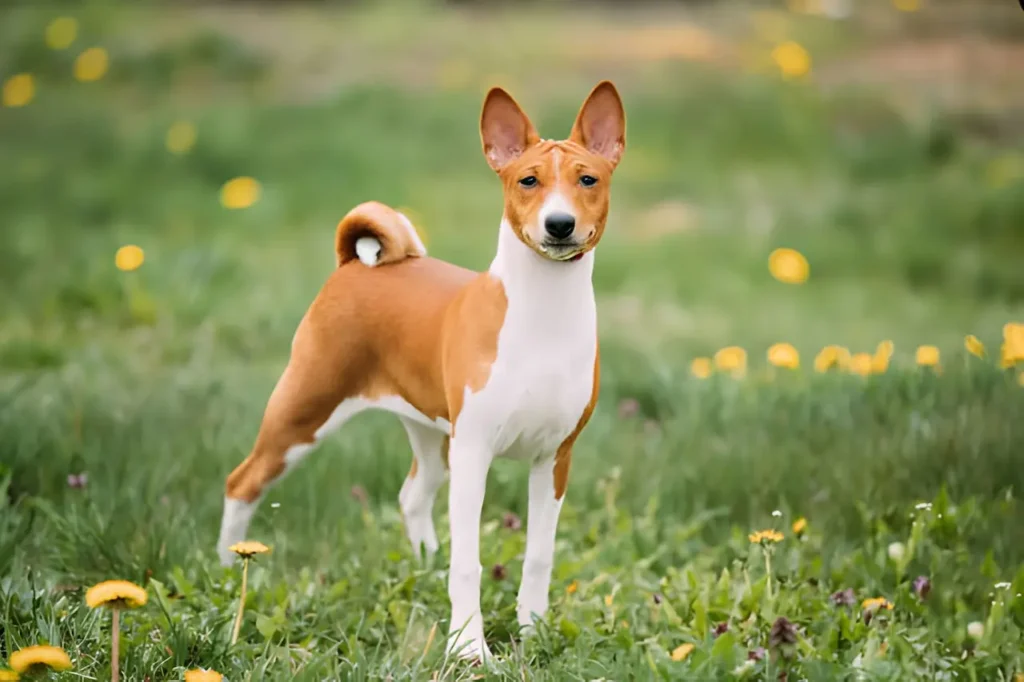
Breed Overview
The Basenji, often called the “barkless dog” due to its unique yodel-like vocalizations, originates from equatorial Central Africa, making it one of the most heat-adapted small dog breeds for hot weather. Their homeland’s consistently high temperatures and humidity have shaped remarkable heat tolerance capabilities.
These compact hounds possess short, fine coats that facilitate maximum heat dissipation. Their large, erect ears function as natural radiators, allowing excess heat to escape efficiently. The breed’s lean, athletic build and cat-like grooming behaviors further enhance their ability to stay cool. Basenjis are highly intelligent but independent, requiring experienced ownership and consistent positive reinforcement training methods.
Best For: Experienced dog owners, active individuals, those seeking a unique breed
Exercise Needs: Moderate to high – daily exercise required
Grooming: Very low – minimal shedding, self-grooming like cats
Training Challenge: High – intelligent but stubborn
Dalmatian – The Iconic Spotted Coach Dog
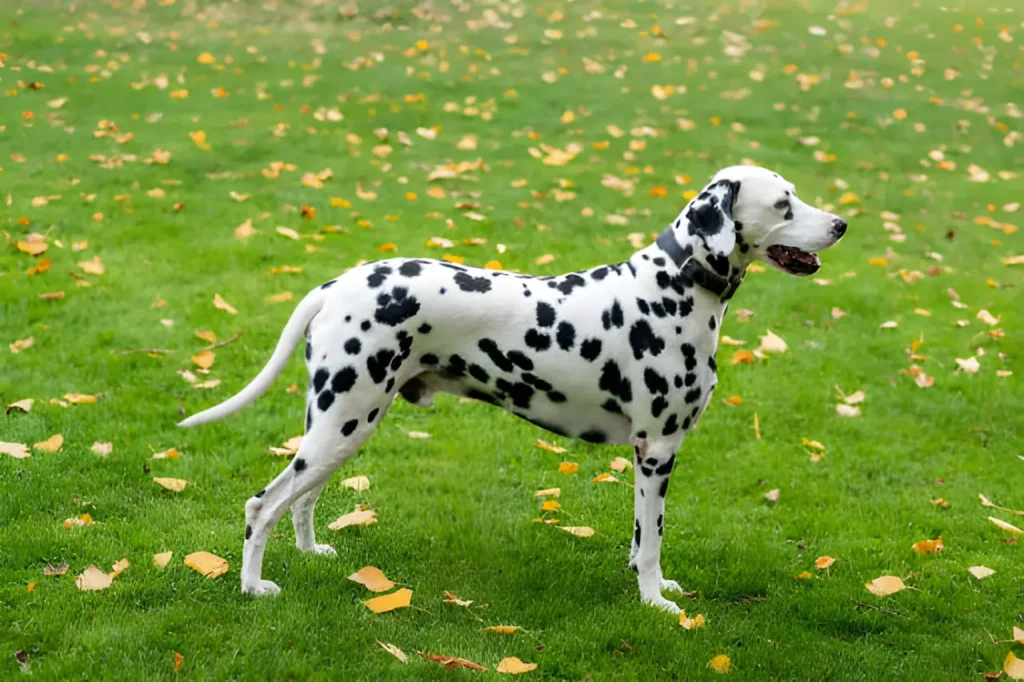
Breed Overview
Dalmatians rank among the most recognizable dog breeds that do well in hot weather, thanks to their distinctive spotted coats and historical role as carriage dogs. These athletic dogs accompanied horse-drawn vehicles across diverse terrain and climate conditions, requiring exceptional stamina and weather adaptability.
Their short, white coat with black or liver spots provides natural solar reflection, significantly reducing heat absorption. The breed’s lean, muscular build and high energy level make them perfect companions for active families in warm climates. However, their exercise requirements demand careful management during peak heat—Dalmatians need vigorous daily activity but should exercise during cooler morning or evening hours to prevent overexertion in hot weather.
Best For: Active families, runners, those with large yards
Exercise Needs: Very High – requires extensive daily exercise
Grooming: Moderate – sheds year-round despite short coat
Special Note: Prone to deafness – hearing testing recommended
Dachshund – The Tenacious Badger Hunter
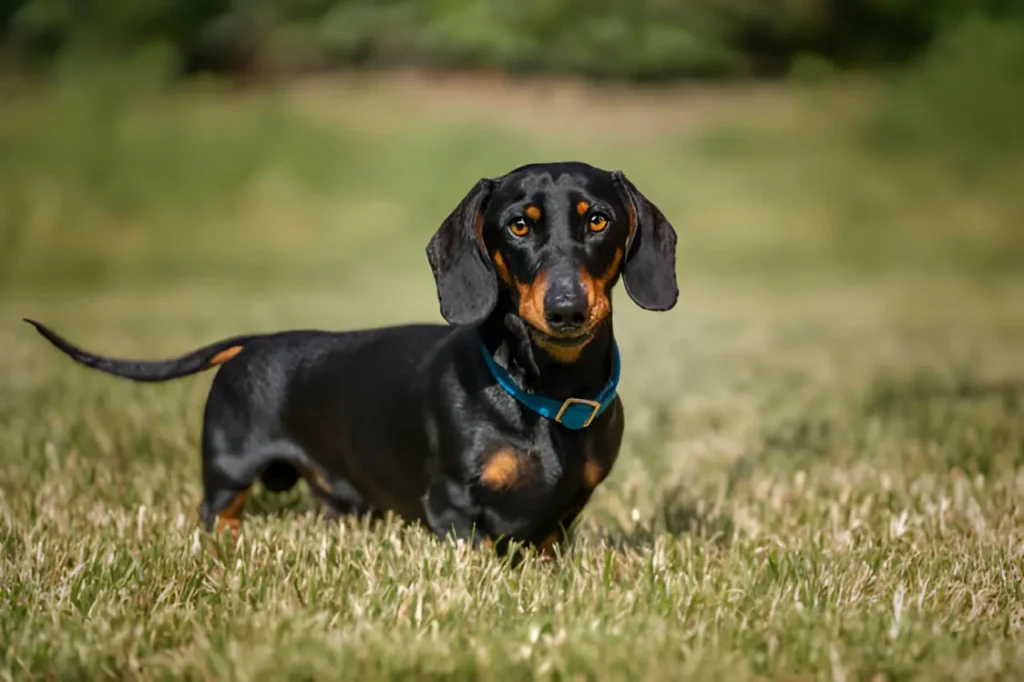
Breed Overview
Dachshunds, particularly the smooth-coated variety, demonstrate surprising adaptability to hot weather despite their compact stature. These determined hunters were originally bred to pursue badgers into underground burrows, requiring courage and tenacity that modern Dachshunds retain.
The smooth-coated Dachshund excels as a small dog breed for hot weather due to minimal coat insulation. These spirited dogs often seek comfortable, warm resting spots, making them content in heated environments. Their energetic disposition can lead to overexertion, however, necessitating owner vigilance during elevated temperatures. Supervision ensures these fearless dogs don’t exceed their thermoregulatory capacity during play in hot weather.
Best For: Apartment dwellers, families, those wanting a small companion
Exercise Needs: Moderate – daily walks and play
Grooming: Low (smooth), Moderate (long/wire-haired)
Health Note: Prone to back problems – avoid jumping from heights
Greyhound – The Ancient Racing Sighthound
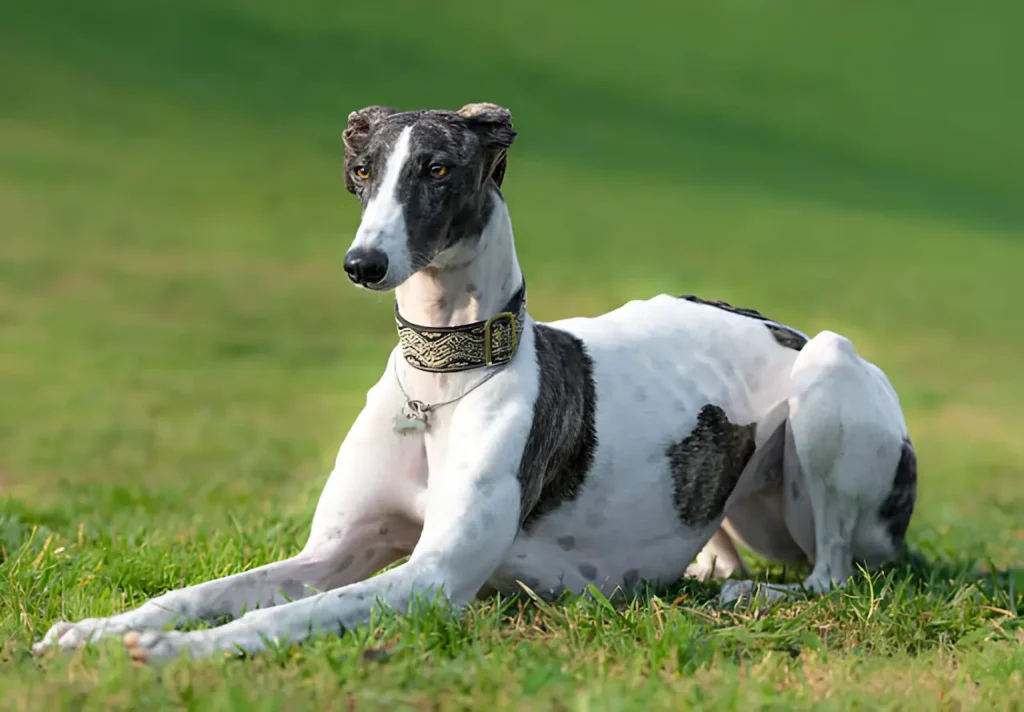
Breed Overview
Greyhounds represent a fascinating temperature paradox—their lean bodies, elongated limbs, and minimal body fat render them extremely cold-sensitive, yet these same characteristics make them excellent dogs for hot weather climates. Their short, fine coat offers minimal insulation, while their large lung capacity and efficient cardiovascular system support effective heat dissipation.
After experiencing discomfort during cool seasons, Greyhounds typically embrace warmer months enthusiastically, often observed sunbathing extensively. Despite their reputation as racing dogs, they’re surprisingly low-energy indoors, earning the nickname “40 mph couch potatoes.” Their gentle temperament and moderate exercise requirements make them suitable for warm-climate households seeking a larger, calm companion.
Best For: Quiet homes, those wanting low-energy large dogs, retirees
Exercise Needs: Moderate – short bursts of running, long walks
Grooming: Very Low – minimal shedding and grooming
Adoption Note: Many retired racing Greyhounds available for adoption
German Shorthaired Pointer – The Versatile Sporting Dog
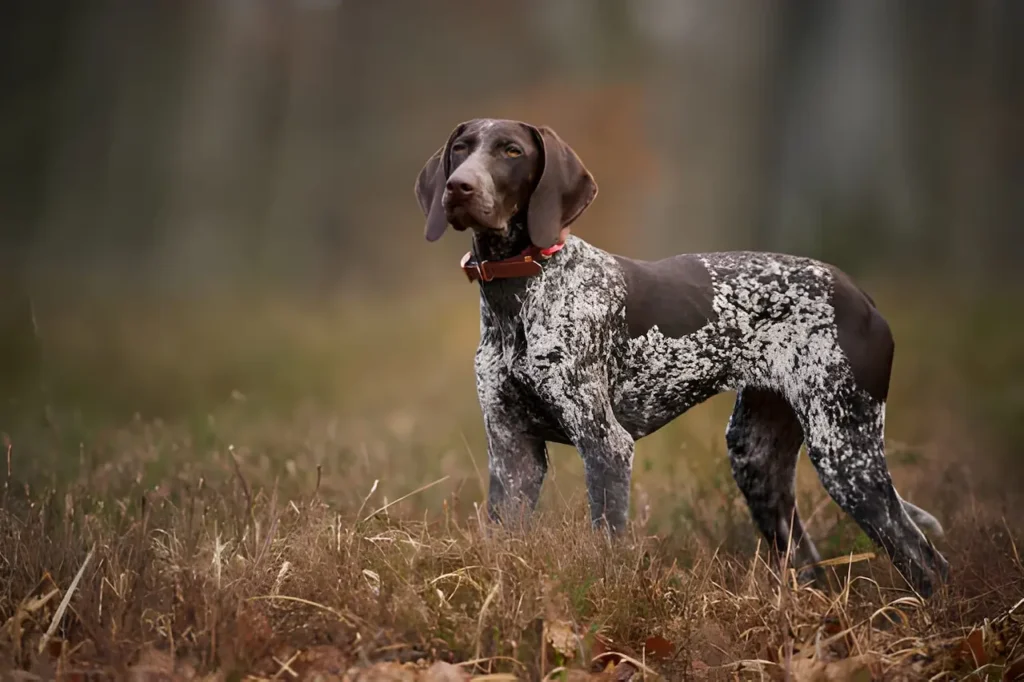
Breed Overview
German Shorthaired Pointers (GSPs) exemplify versatile sporting dog breeds that thrive in hot weather. Their short, dense coat and athletic build support vigorous activity in elevated temperatures. These intelligent hunting dogs possess a natural affinity for water, making swimming an excellent cooling mechanism during warm weather exercise.
However, their intense drive and boundless enthusiasm can lead to dangerous overexertion in hot climates. GSPs often resist stopping when engaged in stimulating activities, potentially pushing themselves beyond safe limits. Owners must implement mandatory rest intervals and provide water access during outdoor activities in warm weather. Their high energy and intelligence require experienced handling and extensive daily exercise.
Best For: Very active families, hunters, those with outdoor lifestyles
Exercise Needs: Very High – requires 1-2 hours daily vigorous exercise
Grooming: Low – weekly brushing sufficient
Training: Highly trainable but needs consistent training from puppyhood
Chihuahua – The Mighty Mexican Desert Dog
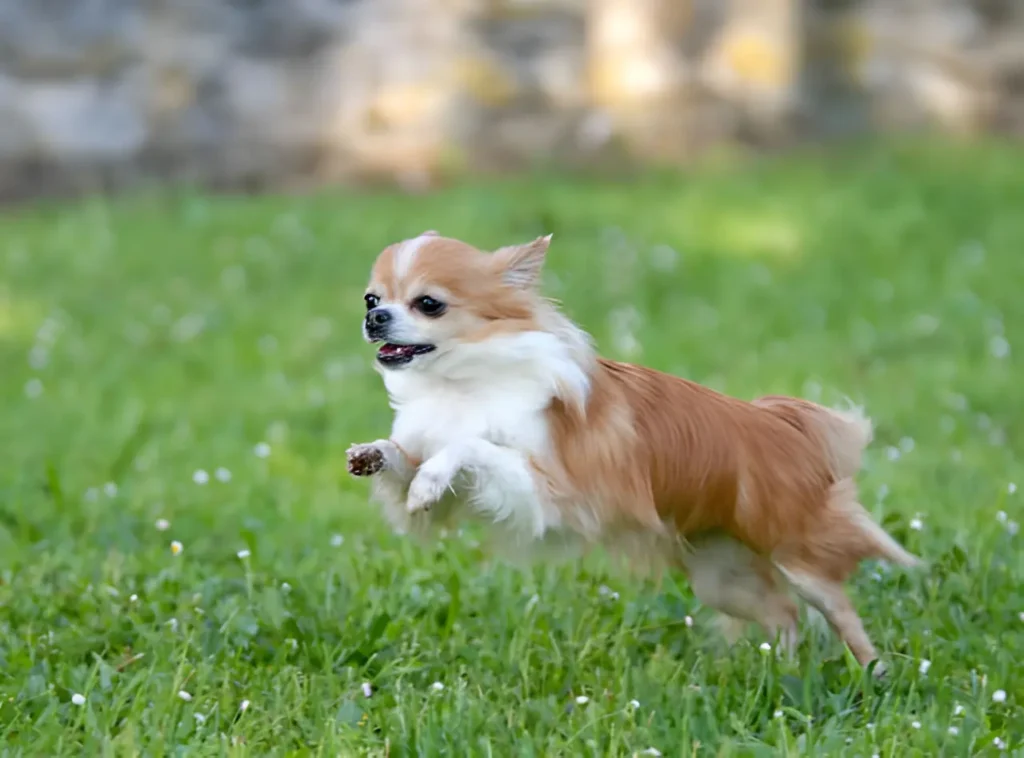
Breed Overview
The Chihuahua stands as the ultimate small dog breed for hot weather, with origins in Mexico’s scorching desert climate. These tiny dogs possess remarkable heat adaptation despite their diminutive size. Their minimal body mass, thin coat, and compact frame enable rapid heat dissipation that larger breeds cannot achieve.
Conversely, these same characteristics cause rapid heat loss in cool conditions, often necessitating sweaters or jackets in air-conditioned spaces. The smooth-coated Chihuahua variety demonstrates superior heat tolerance compared to long-haired Chihuahuas. Their compact size makes them ideal for apartment living in urban warm climates, while their fierce loyalty and bold personality create strong bonds with their families. Despite their tiny stature, Chihuahuas possess outsized personalities.
Best For: Apartment living, seniors, singles, those wanting portable companions
Exercise Needs: Low to Moderate – short daily walks
Grooming: Low (smooth), Moderate (long-haired)
Special Care: Vulnerable to cold – requires warm indoor environment in winter
Ibizan Hound – The Mediterranean Rabbit Hunter
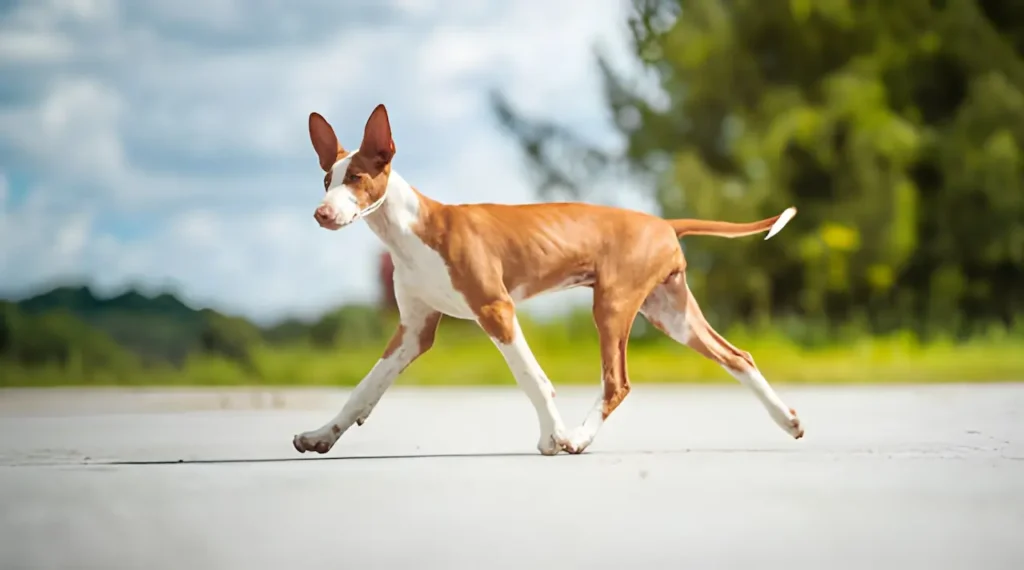
Breed Overview
The Ibizan Hound possesses the optimal trifecta of heat-tolerance characteristics that define the best dog breeds for hot climates: large, erect ears functioning as thermal radiators, short coat offering minimal insulation, and elongated limbs providing enhanced surface area for heat exchange.
Developed on Mediterranean islands with consistently elevated temperatures for rabbit coursing, these elegant sighthounds retain exceptional heat adaptation. Their calm demeanor combined with athletic capability makes them suitable for active families in warm regions. However, their strong prey drive requires secure fencing and leash management—Ibizan Hounds may chase small animals with intense focus. Their jumping ability is legendary, requiring tall, secure fencing.
Best For: Active owners, those with secure yards, experienced dog owners
Exercise Needs: High – needs daily running opportunities
Grooming: Very Low – minimal maintenance
Training Challenge: Moderate – independent thinkers with prey drive
Airedale Terrier – The King of Terriers
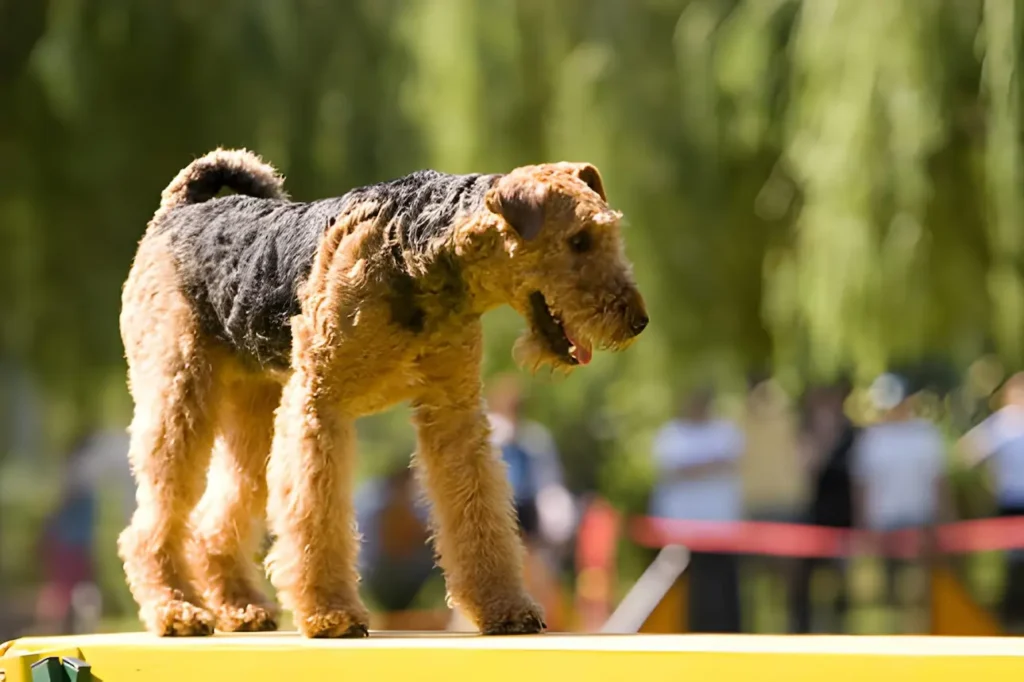
Breed Overview
The Airedale Terrier’s wiry coat texture provides an unexpected advantage in warm weather, making them suitable dogs for hot climates despite their thick appearance. The coarse, curled structure prevents heat entrapment near the skin, instead creating air pockets that allow thermal dissipation through natural ventilation.
This characteristic, combined with their adaptable nature, enables Airedales to thrive in both warm and temperate climates. As the largest terrier breed, they bring working dog intelligence, determination, and versatility. However, they require experienced handling and consistent training from puppyhood—Airedales can be stubborn and willful without proper leadership. Their protective instinct makes them excellent watchdogs.
Best For: Experienced owners, active families, those wanting a versatile working dog
Exercise Needs: High – extensive daily exercise required
Grooming: High – professional grooming every 6-8 weeks, regular brushing
Training: Requires firm, consistent training – can be stubborn
Great Dane – The Gentle Giant Heat-Seeker
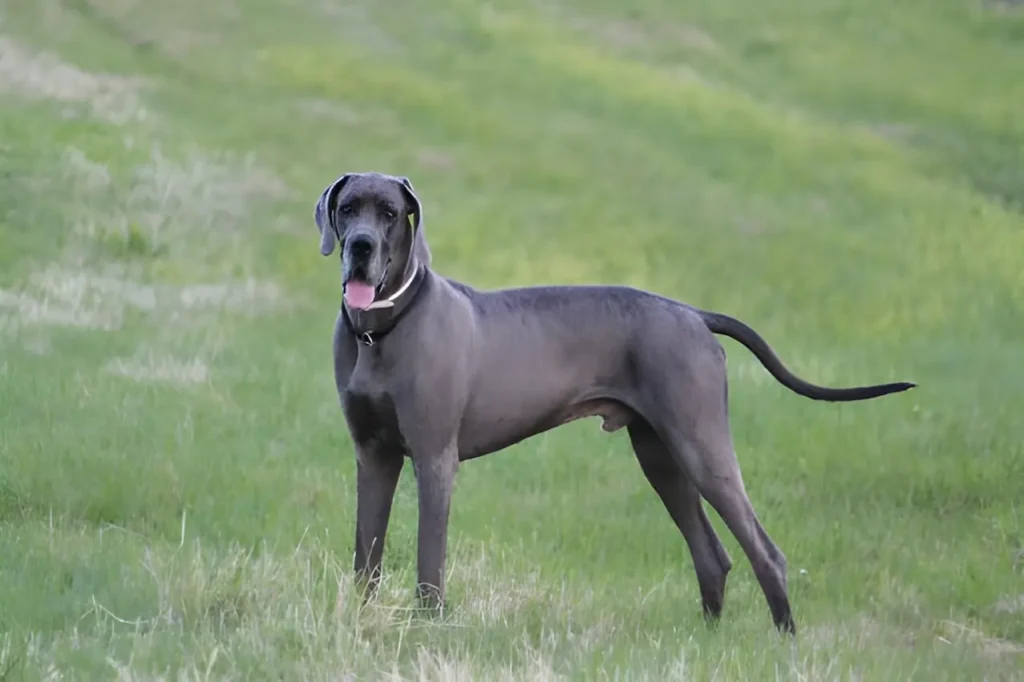
Breed Overview
Great Danes’ affinity for warmth contradicts initial expectations given their massive stature, but they rank among large dog breeds that tolerate hot weather well. These gentle giants possess naturally low energy levels and demonstrate strong preference for lounging rather than prolonged activity, reducing metabolic heat generation significantly.
Their short, smooth coat facilitates heat dissipation when necessary. Great Danes actively seek warm spots—positioning themselves in sunny areas or near heat sources. Owners seeking a Great Dane for warm climates should prioritize lighter coat colors (fawn, harlequin, mantle patterns) as these reflect solar radiation more effectively than solid black or blue coats. Despite their imposing size, their sedentary nature and calm temperament make them surprisingly suitable for warm-climate living with adequate indoor cooling.
Best For: Those wanting a giant breed, families with space, those home frequently
Exercise Needs: Moderate – daily walks, avoid overexertion
Grooming: Low – weekly brushing
Health Note: Prone to bloat – feed multiple small meals, avoid exercise after eating
Xoloitzcuintli – The Ancient Aztec Dog
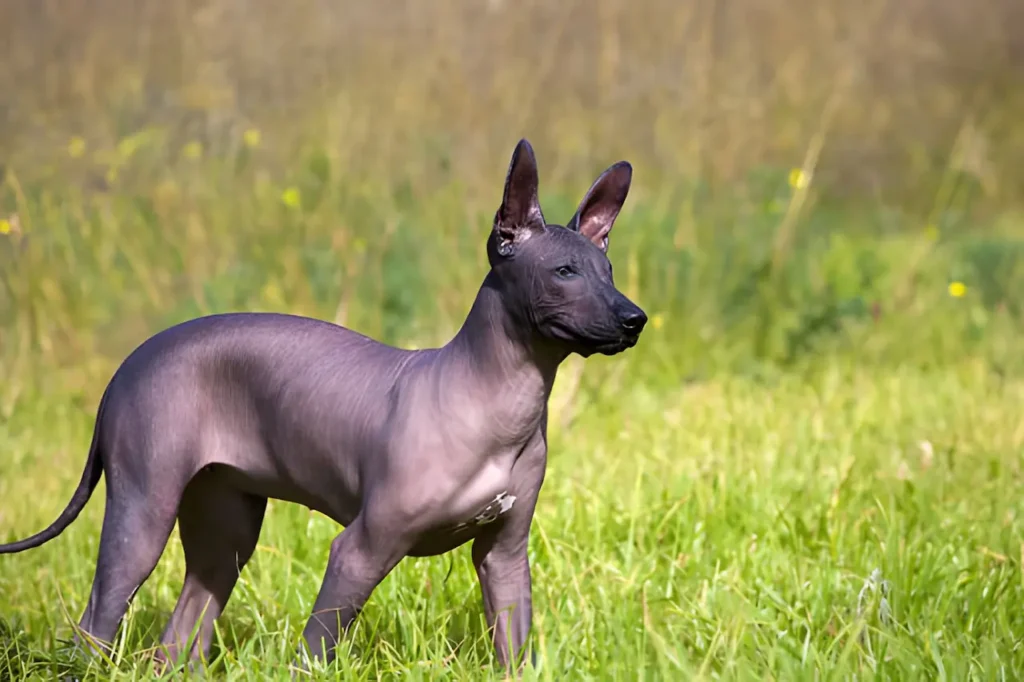
Breed Overview
The Xoloitzcuintli (pronounced “show-low-eats-QUEENT-lee”), affectionately called “Xolo,” ranks among the oldest and rarest dog breeds for hot weather. Originating from Mexico over 3,000 years ago, these ancient dogs were considered sacred by Aztec civilizations. Available in three size varieties and two coat types, the hairless variety demonstrates obvious advantages for hot climates through direct thermal dissipation without fur insulation.
However, exposed skin requires diligent sun protection using veterinary-approved sunscreen to prevent solar injury, skin damage, and potential skin cancer. These intelligent, devoted dogs serve as excellent watchdogs, alerting to visitors while maintaining reserved demeanor with strangers. Their calm temperament and moderate energy make them suitable for various living situations in warm climates. The coated variety has a short, smooth coat and requires less sun protection.
Best For: Those wanting a unique breed, apartment living, allergy sufferers (hairless variety)
Exercise Needs: Moderate – daily walks and play
Grooming: Very Low (hairless), Low (coated)
Special Care: Requires sunscreen for outdoor activities, moisturizer for skin
Afghan Hound – The Aristocratic Mountain Hunter
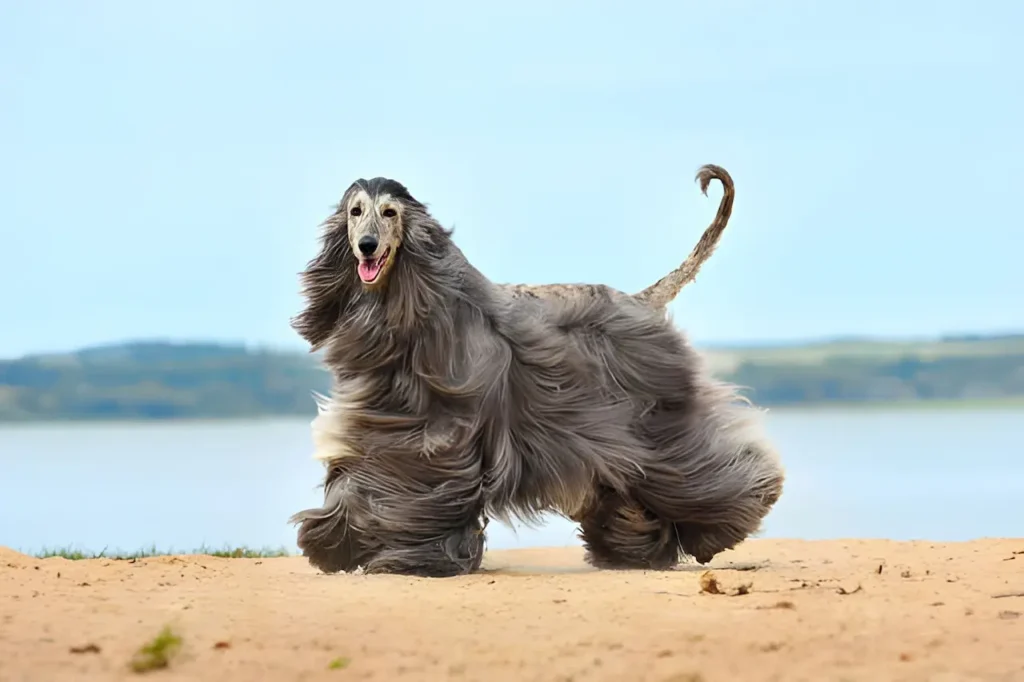
Breed Overview
The Afghan Hound’s luxurious, flowing coat appears contradictory to heat tolerance, yet this ancient breed demonstrates remarkable climate adaptability that makes them suitable dogs for hot weather. Developed in Afghanistan’s mountainous regions experiencing extreme temperature fluctuations—from scorching summer days to frigid winter nights—their unique coat provides insulation against both heat and cold.
The coat’s silky texture and layering create air pockets that facilitate thermoregulation across wide temperature ranges. This versatility, combined with their rugged constitution developed through centuries of hunting large game in challenging terrain, makes them surprisingly suitable for varied climates including warm regions. Their independent, aloof nature reflects their heritage as independent hunters. Afghan Hounds require dedicated grooming commitment—daily brushing prevents matting in their spectacular coat.
Best For: Experienced owners, those committed to grooming, spacious homes
Exercise Needs: Moderate to High – needs regular running opportunities
Grooming: Very High – daily brushing required, professional grooming recommended
Training Challenge: High – independent and sometimes stubborn
Italian Greyhound – The Miniature Sighthound
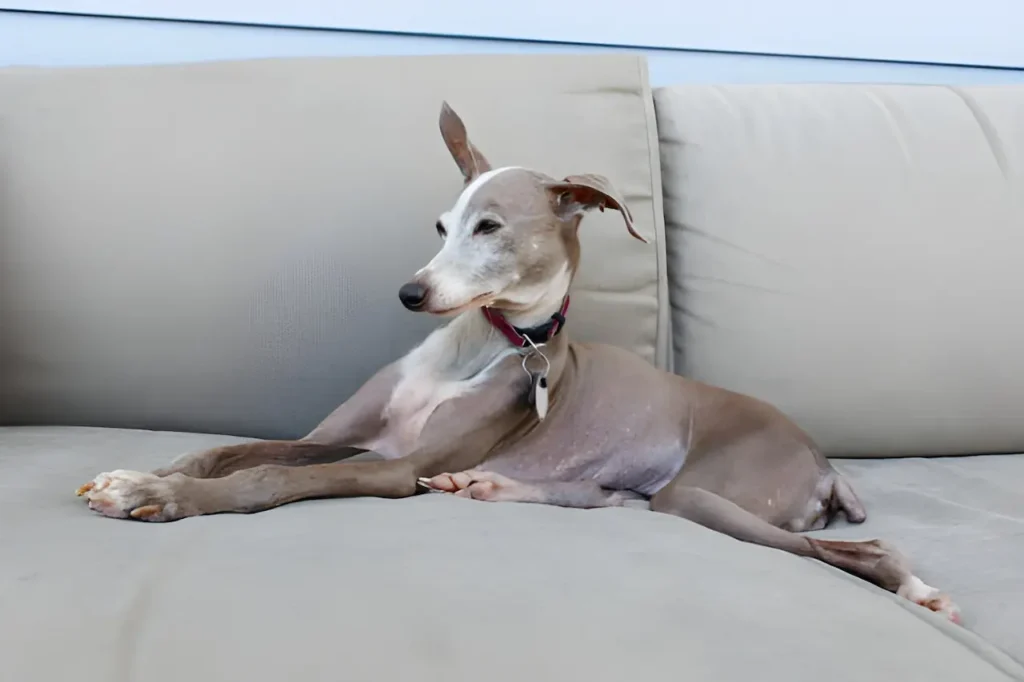
Breed Overview
Italian Greyhounds (Iggies) share the thermal characteristics of their larger Greyhound relatives, making them excellent small hot weather dog breeds. Their slender build, minimal body fat, and short, fine coat render them extremely intolerant of cold weather—frequently observed seeking warmth under blankets, wearing protective clothing, or sunbathing—but ideally suited for warm climates.
Their elegant appearance belies a playful, energetic nature requiring regular exercise despite their tiny size. These affectionate toy dogs bond strongly with their families and often display cat-like behaviors, including seeking high perches. Owners must monitor these spirited dogs during activity to prevent overexertion and apply veterinary-approved sunscreen to exposed skin areas during extended sun exposure. Their delicate bone structure requires gentle handling, especially around young children.
Best For: Apartment living, those wanting a small companion, quiet homes
Exercise Needs: Moderate – daily walks and indoor play
Grooming: Very Low – minimal maintenance
Special Note: Fragile bones – careful handling required, not ideal for homes with very young children
Australian Cattle Dog – The Outback Herder
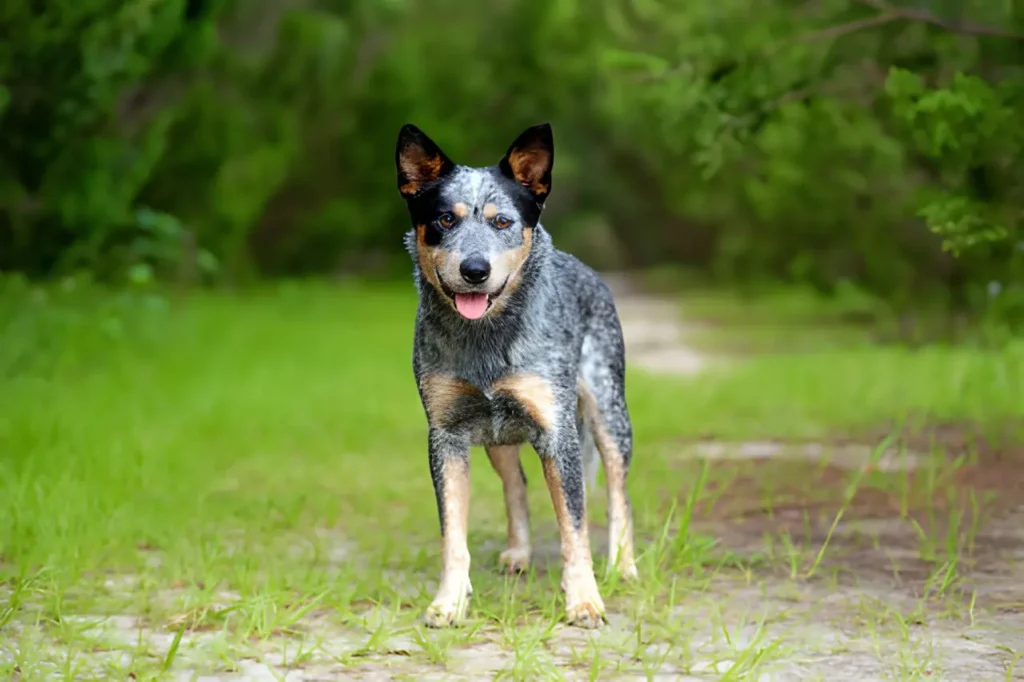
Breed Overview
Australian Cattle Dogs (Blue Heelers, Queensland Heelers, or Red Heelers depending on coat color) were specifically developed for herding livestock in Australia’s harsh, hot outback conditions, making them among the best working dog breeds for hot climates. Their weather-resistant double coat, contrary to initial assumptions, provides protection from both intense sun and heat—the outer layer reflects solar radiation while the undercoat insulates.
These medium-sized dogs possess exceptional endurance, intelligence, and tireless work ethic. However, their intense drive and high exercise requirements demand significant owner commitment. Prospective owners must provide adequate physical exercise and mental stimulation through training, work, or dog sports activities to prevent behavioral issues. Without sufficient outlets for their energy and intelligence, Australian Cattle Dogs can become destructive or develop neurotic behaviors.
Best For: Very active owners, farms/ranches, dog sports enthusiasts
Exercise Needs: Very High – requires 2+ hours daily vigorous exercise
Grooming: Moderate – weekly brushing, heavy seasonal shedding
Training: Highly intelligent – needs job or purpose, excellent at dog sports
Chinese Crested – The Elegant Companion
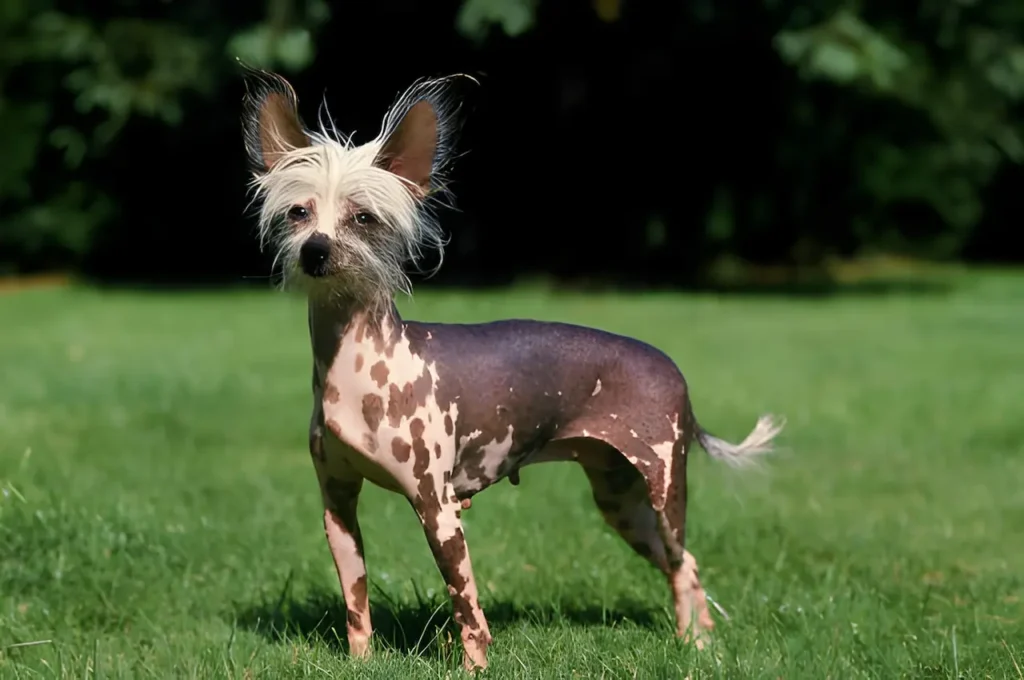
Breed Overview
The Chinese Crested’s distinctive appearance—characterized by large, erect ears, small stature, and hairless body with characteristic plumes on head, feet, and tail—provides excellent heat tolerance for hot climates. Their minimal coat enables efficient heat dissipation while their compact size reduces metabolic heat generation, making them ideal small dogs for hot weather.
Like all hairless dog breeds, they require vigilant sun protection using veterinary-approved sunscreen during outdoor activities. The hairless variety’s exposed skin can sunburn quickly, potentially leading to skin damage and increased cancer risk. The Powderpuff variety possesses full coat coverage with soft, silky hair and demonstrates reduced heat tolerance compared to hairless siblings. Chinese Cresteds’ playful, social nature and modest exercise requirements make them excellent companions for warm-climate apartment dwellers or retirees.
Best For: Apartment living, seniors, those wanting a unique companion
Exercise Needs: Low to Moderate – short daily walks
Grooming: Moderate (hairless – skin care required), High (powderpuff – daily brushing)
Special Care: Sunscreen essential for hairless variety, prone to dental issues
Dog Breeds to Avoid in Hot Weather Climates: Critical Safety Information
Cold-Weather Breeds That Struggle in Heat
Veterinary research clearly identifies breeds developed for arctic and subarctic conditions as inappropriate choices for warm climates. These breeds possess dense double coats, compact body structures designed for heat retention, and physiological adaptations for cold tolerance that become dangerous liabilities in hot weather.
Breeds to Avoid in Hot Climates:
- Siberian Husky – Thick double coat, bred for pulling sleds in arctic conditions
- Alaskan Malamute – Heavy double coat, cold-weather sled dog
- Samoyed – Fluffy white double coat designed for extreme cold
- Bernese Mountain Dog – Long, thick coat for Swiss Alps
- Saint Bernard – Heavy body mass, thick coat for alpine rescue
- Newfoundland – Water-resistant double coat for cold water rescue
- Tibetan Mastiff – Extremely thick double coat for Himalayan mountains
Brachycephalic Breeds: Highest Heat Stroke Risk
Recent veterinary studies establish that brachycephalic (flat-faced) dog breeds face dramatically elevated heat stroke risk. The Royal Veterinary College’s landmark VetCompass study, analyzing over 900,000 dogs in the UK, identified brachycephalic conformation as a primary risk factor for life-threatening heat-related illness.
Scientific Evidence: Research published in Scientific Reports demonstrates that brachycephalic dogs have twice the odds of heat stroke compared to normal-muzzled breeds. Some brachycephalic breeds show up to 17 times greater heat stroke risk than Labrador Retrievers (used as the baseline breed).
Why Flat-Faced Dogs Struggle:
Brachycephalic breeds suffer from compromised respiratory function due to anatomical abnormalities including:
- Stenotic nares (narrowed nostrils restricting airflow)
- Elongated soft palate (blocks airway)
- Hypoplastic trachea (narrowed windpipe)
- Everted laryngeal saccules (tissue obstructing breathing)
Collectively termed Brachycephalic Obstructive Airway Syndrome (BOAS), these restrictions severely impair the panting mechanism dogs rely on for cooling. The heat stroke mortality rate approaches 14% in all dogs, with brachycephalic breeds experiencing disproportionate fatalities.
High-Risk Brachycephalic Breeds by Heat Stroke Risk:
- Chow Chow – 17× higher risk (thick coat + flat face = deadly combination)
- English Bulldog – 14× higher risk
- French Bulldog – 6× higher risk
- Dogue de Bordeaux – 5× higher risk
- Pug – 3× higher risk
- Cavalier King Charles Spaniel – 3× higher risk
- Boston Terrier – Elevated risk
- Pekingese – Elevated risk
- Shih Tzu – Elevated risk
- Boxer – Elevated risk (longer muzzle but still brachycephalic)
Expert Veterinary Recommendation: Dr. Dan O’Neill, senior lecturer in companion animal epidemiology at the Royal Veterinary College, emphasizes: “As global temperatures continue rising due to climate change, we must acknowledge the increasing health hazards facing brachycephalic dogs. A core message from this research is to reconsider breeding and acquiring flat-faced dogs, especially for those living in warm climates.”
Veterinary professionals strongly advise against keeping brachycephalic breeds in hot climates unless owners can guarantee:
- Continuous air conditioning indoors
- Strictly limited outdoor exposure to cool periods only (early morning/late evening)
- Constant veterinary monitoring for BOAS symptoms
- Immediate access to emergency veterinary care

